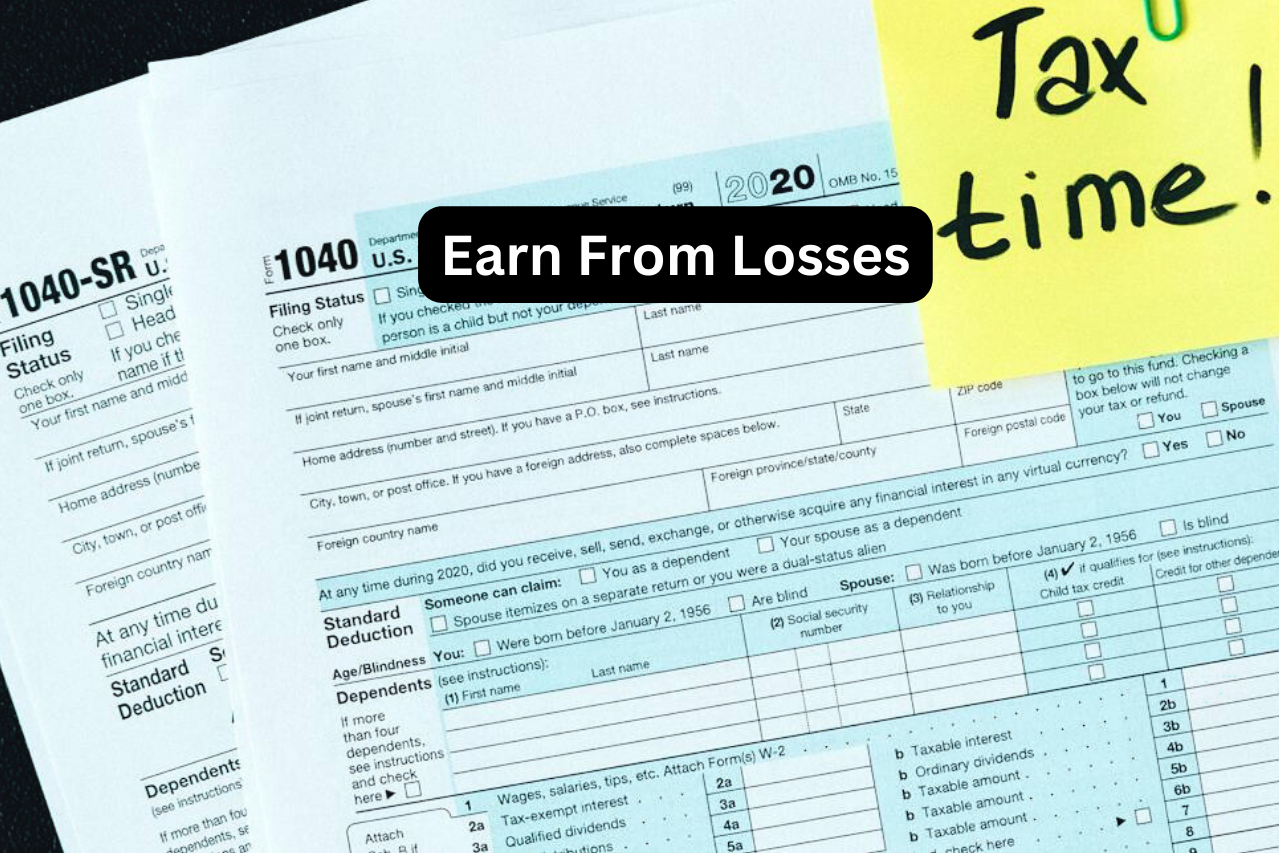How to claim business loss on taxes in 2024
Know how to claim business loss on taxes: 2024
What is a Business Loss and how to claim business loss on taxes?
A business takes a hit when it spends more than it earns, especially in the early stages or when growing. But here is the twist, it’s not all bad news. Thanks to something called Net Operating Loss (NOL), you can turn this around. NOL lets you claim tax refunds for what you’ve lost in the past or might lose in the future. It’s like finding a silver lining in financial clouds.
The impact of business losses extends differently based on how a business is structured. For businesses filing taxes through personal tax returns, there are limits on the losses that can be claimed.
On the other hand, corporations can experience business losses without directly affecting the taxes of individual shareholders.
It’s important to note that business owners with limited risk or minimal involvement in day-to-day operations might encounter restrictions on their business loss deductions for tax purposes.
However, if your losses exceed the limit in one tax year, you may have the opportunity to carry forward a portion or all of those losses to offset taxable income in the years to come.
This calculated approach provides flexibility and potential tax benefits for businesses facing the complexities of loss and taxation.
Three type of Business losses and how to claim business loss on taxes:
Operating losses, capital losses, and net operating losses (NOLs).
- Operating losses, born from day-to-day business activities, can be offset against other income.
- Capital losses, arising from asset sales, adhere to distinct rules.
- Net Operating Losses (NOLs) represent expenses surpassing revenues, offering flexibility through carrybacks for potential refunds or carryforwards to offset future income.
How to claim business loss on taxes with Limitations on EBL Deductions:
Simplifying At-Risk Rules:
To claim a business loss on taxes, it begins with grasping At-Risk Rules. These rules prevent claiming more than your actual investment. Those funds for which you are personally liable are “at risk” and eligible for deductions.
It’s important to note that this varies for businesses with multiple partners compared to sole proprietorships.
Active Engagement Matters:
Active involvement in your business is significant. If you are not consistently and substantially engaged, the IRS limits your ability to directly deduct losses from personal returns.
Passive activity loss rules:
According to IRS guidelines, strictly permit the use of passive losses solely to offset passive income. The IRS defines a passive activity as one in which the taxpayer did not materially participate during the specific year.
In simpler terms, if you’re not significantly involved in an activity generating income for a particular year, it falls under the category of passive.
Common examples of passive activity losses include those arising from leasing equipment, real estate rentals, or participating in limited partnerships.
These rules aim to clarify that losses from less hands-on ventures can only offset income from similar passive activities.
Excess Business Loss Realities:
Non-corporate taxpayers face excess business loss limitations. These constraints, influenced by at-risk and passive activity rules, are critical considerations.
Excess business losses, exceeding total gross income and gains, have thresholds. Amounts beyond these become net operating loss carryovers for the next taxable year.
60 Objectives of Financial Management every business owner must know in 2024
Calculate your Excess Business Loss (EBL) with simple formula:
EBL = Aggregate trade or business deductions – Aggregate gross trade or business income or gain + Indexed limitation amount. More Info
In short, claiming business losses involves understanding rules, active engagement’s impact, and the realities of excess business losses. This ensures not just maximizing deductions but aligning with U.S. tax regulations.
Functional approach for Excess Loss Carryforward:
The concept of loss carryforward involves a strategic financial method for businesses looking to optimize their tax positions.
In practical terms, if a business faces more losses than gains in a given tax year, it can carry those losses forward to compensate future taxable income.
This essentially means that during profitable years down the road, the business can utilize these accumulated losses to reduce its taxable income, thereby lowering its overall tax liability.
In case, suppose a business undergoes a net operating loss of $50,000 in a specific year. In the subsequent profitable year, where the business generates $100,000 in income, it can deduct the carried-forward loss from this income. This results in a taxable income of $50,000, focusing on how businesses can utilize loss carryforward to manage their tax responsibilities effectively.
This financial strategy empowers businesses to create stability and elasticity by smoothing out their tax obligations over time.
Systematic approach for how to claim business loss on taxes:
Record-Keeping:
Maintain meticulous records of business finances, including expenses and income.
Check Eligibility:
Ensure your business structure qualifies for claiming losses (e.g., sole proprietorship, partnership, LLC, S corporation, C corporation).
Calculate Loss:
Find out your business loss by subtracting deductible expenses from total income.
Complete Tax Forms:
Fill out the relevant tax forms based on your business structure (e.g., Schedule C for sole proprietors, Form 1120 for corporations).
Consider NOL:
If applicable, consider carrying back or forward Net Operating Loss (NOL) to offset past or future income.
Check Credits and Deductions:
Look for available tax credits and deductions to further reduce tax liability.
Consult a Licensed Tax Professional:
Seek advice from a tax professional to ensure compliance with IRS regulations and maximize benefits.
File Tax Return:
Submit your tax return by the IRS deadline with all necessary documentation.
Monitor IRS Communications:
Stay alert for any IRS communication and respond promptly to requests for additional information.
Please note, tax laws can change, so consulting a licensed tax professional ensures accurate and customized guidance for your specific business situation.
Conclusion for how to claim business loss on taxes:
Claiming business losses is like following a roadmap. Keep good records, check if you qualify, and do some math to figure out your loss. Then, fill out the right forms and explore ways to lower your taxes. Of course there are twists and turns.
But here’s the trick:
Get help from tax experts and be ready to talk to the IRS. Think of it like having a trainer for taxation. In this way you can make claiming losses easy and keep your business finances on the right track.
How to start droppshipping business in India under $10
New ideas to earn money online with writing skills
FAQs on how to claim business loss on taxes:
Q1: Why is keeping good records crucial when claiming business losses?
A1: If you keep the detailed records, it’s like having a chart for your business journey. It helps you report your finances accurately, reduces your doubts, makes you confident, make the things easier to claim losses and find deductions.
Q2: Can any small business claim losses on taxes?
A2: Yes, if you’re a sole proprietor, in a partnership, LLC, S corporation, or C corporation, you likely qualify. Always check your eligibility based on your business structure.
Q3: What’s the difference between operating and capital losses?
A3: Operating losses come from day-to-day activities, while selling assets leads to capital losses. Knowing this helps you plan your taxes smartly.
Q4: How does Net Operating Loss (NOL) help small businesses?
A4: NOL lets you offset past or future income if your expenses exceed revenues. It’s like a financial tool that adds flexibility to your tax plans.
Q5: Do I need a tax expert to claim business losses?
A5: It’s not mandatory, if you can do it on your own, you can. Tax experts are skilled in their job, they provide personalized advice, ensure you follow IRS rules, and help you get the most from your taxes.
Disclaimer: This article on "Grow Max Roll" serves educational purposes only, offering a foundational understanding of claiming business losses on taxes. The author and "Grow Max Roll" website assume no responsibility for actions taken based on this information. Readers are encouraged to consult licensed tax experts or lawyers for personalized advice, use their discretion, and be aware of potential changes in IRS rules. The accuracy of the information is as per our knowledge at the time of publication, and for the latest updates, readers are advised to visit the official IRS website.






